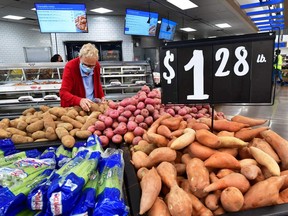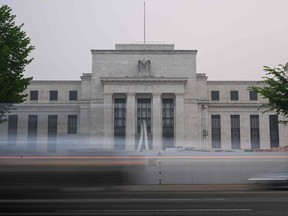Inflation Remains a Concern for Fed and Markets
The latest data from the Labor Department has shown that consumer prices in the United States rose by more than forecasted in April, indicating that inflation will likely persist at elevated levels for longer. This news is significant as it keeps the Federal Reserve on track with its aggressive interest-rate hikes.
Core Consumer Price Index (CPI) Rises 0.6%
The core CPI, which excludes food and energy, increased by 0.6% from a month earlier and 6.2% from April 2021. This figure is higher than the projected 0.4% increase in the Bloomberg survey of economists.
Broader Consumer Price Index (CPI) Rises 0.3%
The broader CPI, which includes food and energy, rose by 0.3% from the prior month and 8.3% on an annual basis. This reading is among the highest in decades, despite a slight cooling compared to previous months.
Large Contributors to Monthly Increase
Some of the largest contributors to the monthly increase included shelter, food, airfares, and new vehicles. Shelter costs, which make up about a third of the overall index, rose by 0.5% for the third straight month. Rent of primary residence climbed by 0.6%, while owners’ equivalent rent increased by the most since 2006.
Airfare Surge
Driven by a pickup in travel plans, the cost of hotel stays rose by 1.7%. Airfares surged a record 18.6% as airlines passed along higher fuel costs to consumers.
Fed’s Interest-Rate Hikes Continue
Despite the Fed raising interest rates, including the biggest rate hike since 2000 last week, global headwinds persist. The central bank is committed to bringing inflation back under control and has signaled that more interest-rate hikes are on the way.
Inflation Persistence
The persistence of high inflation is a concern for both the Fed and markets. Inflation can erode purchasing power and increase borrowing costs, making it more difficult for consumers and businesses to access credit.
Shifting Consumer Spending Habits
Recommended from Editorial
- Bank of Canada turns to interest rate guidance as it battles inflation
- Soaring U.S. dollar raises spectre of ‘reverse currency wars’
- ‘Inflation is much too high:’ Fed hikes rates half-point, signals more to come
- The global stagflation shock of 2022: How bad could it get?
Services Costs Increase by Most Since 2001
The rate of goods and other commodities inflation declined while services costs increased by the most since 2001 on a monthly basis. This trend indicates that consumers are shifting their discretionary income to activities like travel and dining out.
Food Prices Rise 0.9% in April
Food prices rose 0.9% in April, and were up 9.4% from a year earlier. Energy costs declined in April, as gasoline prices fell 6.1% from the prior month. However, gas prices have since rebounded to a record high.
Shelter Costs Remain High
Shelter costs — which are the biggest services’ component and make up about a third of the overall index — rose by 0.5% for the third straight month. Rent of primary residence climbed by 0.6%, while owners’ equivalent rent increased by the most since 2006.
New-Vehicle Prices Advance
New-vehicle prices advanced 1.1% in April, the most this year. Used-auto prices fell by 0.4%.
Powell’s Warning on Inflation
Last week, Powell said ‘inflation is much too high’ and emphasized the central bank understands the financial hardship for Americans.
Conclusion
The persistence of high inflation will likely continue to be a concern for both the Fed and markets. The central bank remains committed to bringing inflation back under control through aggressive interest-rate hikes. However, the ongoing shift in consumer spending habits and global economic conditions will continue to influence inflation trends.
Sources:
- Bloomberg
- Labor Department
Recommendations from Editorial
- Bank of Canada turns to interest rate guidance as it battles inflation
- Soaring U.S. dollar raises spectre of ‘reverse currency wars’
- ‘Inflation is much too high:’ Fed hikes rates half-point, signals more to come
- The global stagflation shock of 2022: How bad could it get?




